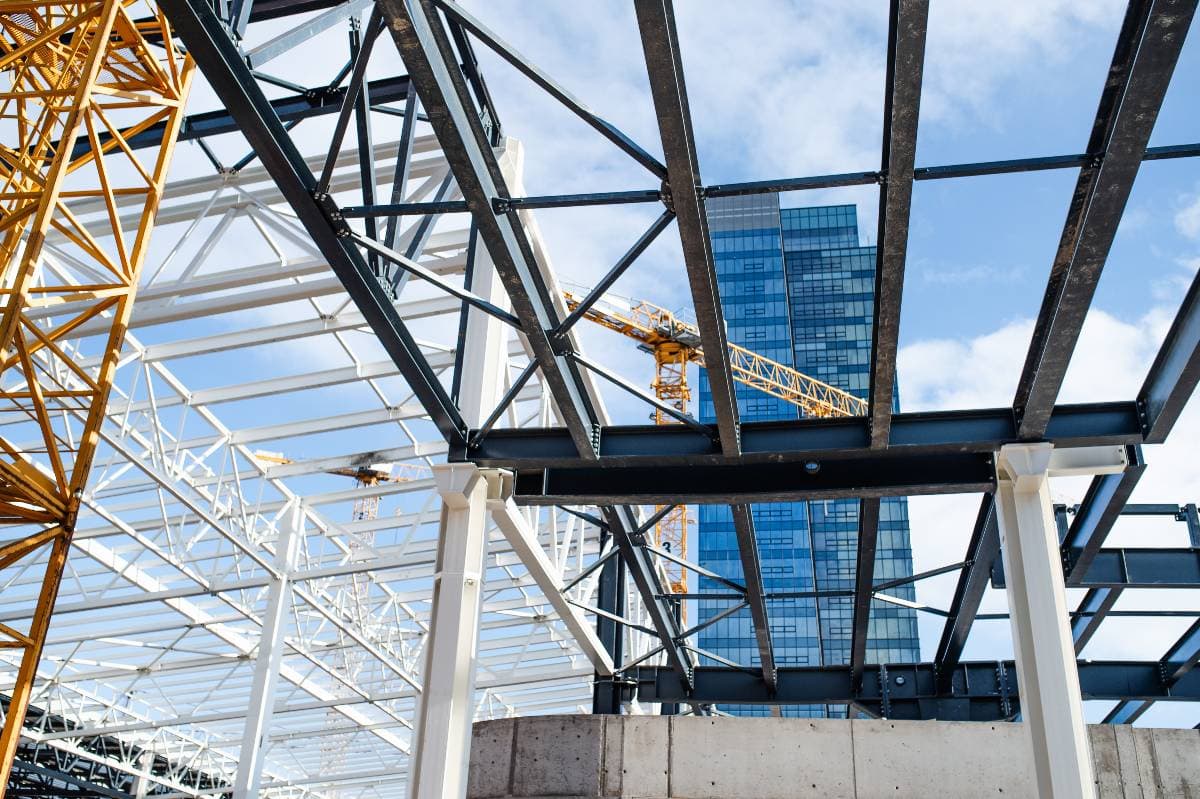The commercial real estate landscape is undergoing a seismic shift. Gone are the days of rigid, one-size-fits-all lease agreements. As a veteran in this field, I’ve witnessed firsthand the rise of innovative commercial lease structures that are reshaping our industry. These new models prioritize flexibility, technology integration, and sustainability, offering fresh opportunities for both landlords and tenants. In this article, we’ll explore how these cutting-edge lease structures are transforming the market and why they matter for your business in today’s dynamic environment.
Key Takeaways
- Innovative lease structures are reshaping the commercial real estate landscape
- Flexibility, technology integration, and sustainability are driving new leasing models
- Embracing these innovations can benefit both landlords and tenants in the long run
The Changing Landscape of Commercial Real Estate
The commercial real estate sector is experiencing a significant shift, driven by several key factors. Market trends are evolving rapidly, influenced by economic fluctuations and changing consumer behaviors. Technological advancements are reshaping how we interact with and utilize commercial spaces, while tenant needs are becoming more diverse and complex.
One of the most notable changes is the increasing demand for flexibility. Businesses are moving away from long-term commitments, seeking arrangements that allow them to adapt quickly to market conditions. This shift has led to the rise of more agile leasing models that cater to these evolving needs.
Key Components of Innovative Commercial Lease Structures
The foundation of these new lease structures rests on several key components:
- Flexibility in lease terms: This allows for adjustments in space requirements or lease duration as business needs change.
- Technology integration: Smart building systems and digital management tools are becoming integral to modern leasing arrangements.
- Sustainability and wellness: There’s an increasing focus on creating environmentally friendly and health-conscious commercial spaces.
- Risk-sharing mechanisms: New structures often distribute risk more evenly between landlords and tenants.
These elements work together to create lease agreements that are more responsive and adaptable to the needs of both parties, fostering a more collaborative relationship between landlords and tenants.
Types of Innovative Commercial Lease Structures
The commercial real estate market now offers a variety of innovative lease structures, each designed to address specific needs and scenarios:
- Hybrid leases combine fixed and variable rent components, offering a balance between stability and flexibility.
- Percentage rent agreements tie rent to the tenant’s performance, aligning the interests of both parties.
- Pop-up and short-term leases cater to businesses with temporary or seasonal needs, allowing for greater experimentation in the market.
- Co-working and shared space models provide flexible options for businesses of all sizes, from startups to established corporations.
- Green leases incorporate sustainability measures, benefiting both the environment and the bottom line.
Each of these structures brings unique advantages, catering to different business models and market conditions.
Benefits of Innovative Lease Structures
The adoption of these new lease structures offers significant benefits across the board:
For landlords, innovative leases can lead to increased occupancy rates, a more diverse tenant mix, and improved risk management. They allow property owners to adapt quickly to market changes and attract a wider range of tenants.
Tenants benefit from lower upfront costs, the flexibility to scale their space needs, and better alignment between their lease obligations and business performance. This can be particularly advantageous for growing businesses or those in volatile markets.
The overall market benefits from increased property utilization, stimulation of new business models, and enhanced urban vibrancy. These structures contribute to a more dynamic and resilient commercial real estate sector.
Negotiation Strategies for Innovative Lease Structures
Negotiating these new lease structures requires a different approach than traditional leases. It’s crucial to have a deep understanding of market dynamics and leverage data analytics to inform decision-making. The goal should be to create win-win scenarios that benefit both landlords and tenants.
Effective negotiation strategies often involve open communication, creative problem-solving, and a willingness to explore unconventional solutions. It’s about finding a balance that meets the needs of all parties involved while also accounting for potential future changes in the market or business environment.

Tenant Improvement Allowances in Modern Leasing
Tenant improvement allowances (TIs) are evolving alongside lease structures. In today’s market, TIs are increasingly being used to create customized spaces that meet specific tenant needs. This approach helps balance upfront costs with long-term value, making it easier for businesses to create environments that support their operations and culture.
Modern TI structures often incorporate more flexibility, allowing for phased improvements or adjustments over the lease term. This adaptability can be particularly beneficial for growing businesses or those in industries undergoing rapid change.
The Role of PropTech in Shaping Lease Innovations
PropTech is playing a significant role in shaping the future of commercial leasing. Advanced lease administration software is streamlining processes and reducing errors. Virtual property tours are changing how potential tenants explore spaces, while AI-driven lease optimization tools are helping both landlords and tenants make more informed decisions.
These technological advancements are not only making the leasing process more efficient but also providing valuable insights that can inform strategy and decision-making.
Challenges and Considerations
While innovative lease structures offer many benefits, they also come with challenges. Legal and regulatory issues can be complex, particularly when dealing with novel arrangements. Implementation and management of these structures often require new skills and systems.
Balancing risk and reward is a key consideration.
While more flexible arrangements can offer advantages, they may also introduce new uncertainties. It’s crucial for both landlords and tenants to carefully consider the implications of these new structures and ensure they align with their long-term goals and risk tolerance.
Crisis-Proofing: Pandemic-Related Lease Clauses
The recent global pandemic has highlighted the importance of crisis-proofing lease agreements. We’re seeing an increase in force majeure clauses that specifically address pandemics, as well as more detailed health and safety provisions.
Flexibility clauses that allow for adjustments in unprecedented situations are becoming more common. These provisions aim to create a framework for dealing with unforeseen circumstances, providing a level of security for both landlords and tenants.
Case Studies: Successful Implementation of Innovative Lease Structures
Real-world examples demonstrate the potential of innovative lease structures. For instance, a mixed-use development successfully used hybrid leases to attract a diverse tenant mix, creating a vibrant and resilient community.
In another case, a struggling retail space was revitalized through a series of pop-up stores, breathing new life into the property and attracting permanent tenants.
These case studies illustrate how innovative approaches to leasing can transform properties and create new opportunities in the commercial real estate market.

Future Trends in Commercial Lease Innovation
Looking ahead, we can expect to see continued innovation in commercial leasing. AI and data analytics are likely to play an increasingly important role in lease management and decision-making. The integration of IoT and smart building technologies will become more widespread, offering new opportunities for efficiency and customization.
There’s also a growing focus on tenant experience, with leases and property management strategies evolving to prioritize the needs and preferences of occupants. This shift is likely to drive further innovations in lease structures and property services.
FAQs
How do flexible lease terms benefit both landlords and tenants?
What role does technology play in modern commercial lease structures?
How are sustainability considerations incorporated into innovative lease agreements?
What are the key differences between traditional and hybrid lease models?
How can data analytics improve commercial lease management?
Conclusion
The landscape of commercial real estate is evolving rapidly, driven by changing market conditions, technological advancements, and shifting tenant needs. Innovative lease structures are at the forefront of this evolution, offering new ways to create value and manage risk in commercial properties.
As we move forward, embracing these innovations will be crucial for success in the commercial real estate sector. Whether you’re a landlord looking to optimize your property portfolio or a tenant seeking more flexible space solutions, understanding and leveraging these new lease structures can provide significant advantages.
If you’re interested in exploring how innovative lease structures can benefit your business, I encourage you to schedule a consultation. With my extensive experience in the field, I can help you navigate these new opportunities and develop strategies tailored to your specific needs and goals.




